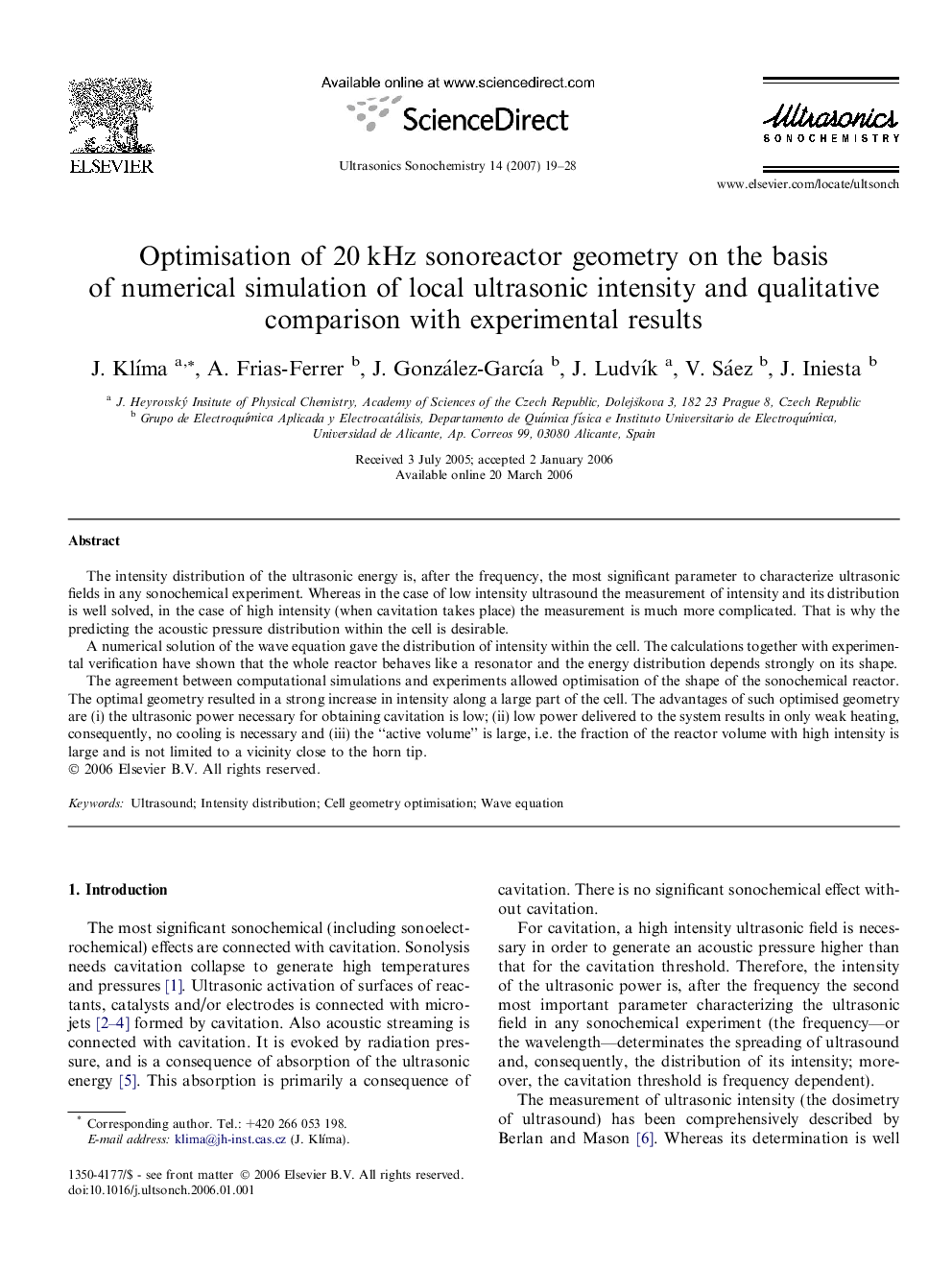| Article ID | Journal | Published Year | Pages | File Type |
|---|---|---|---|---|
| 1266760 | Ultrasonics Sonochemistry | 2007 | 10 Pages |
The intensity distribution of the ultrasonic energy is, after the frequency, the most significant parameter to characterize ultrasonic fields in any sonochemical experiment. Whereas in the case of low intensity ultrasound the measurement of intensity and its distribution is well solved, in the case of high intensity (when cavitation takes place) the measurement is much more complicated. That is why the predicting the acoustic pressure distribution within the cell is desirable.A numerical solution of the wave equation gave the distribution of intensity within the cell. The calculations together with experimental verification have shown that the whole reactor behaves like a resonator and the energy distribution depends strongly on its shape.The agreement between computational simulations and experiments allowed optimisation of the shape of the sonochemical reactor. The optimal geometry resulted in a strong increase in intensity along a large part of the cell. The advantages of such optimised geometry are (i) the ultrasonic power necessary for obtaining cavitation is low; (ii) low power delivered to the system results in only weak heating, consequently, no cooling is necessary and (iii) the “active volume” is large, i.e. the fraction of the reactor volume with high intensity is large and is not limited to a vicinity close to the horn tip.
